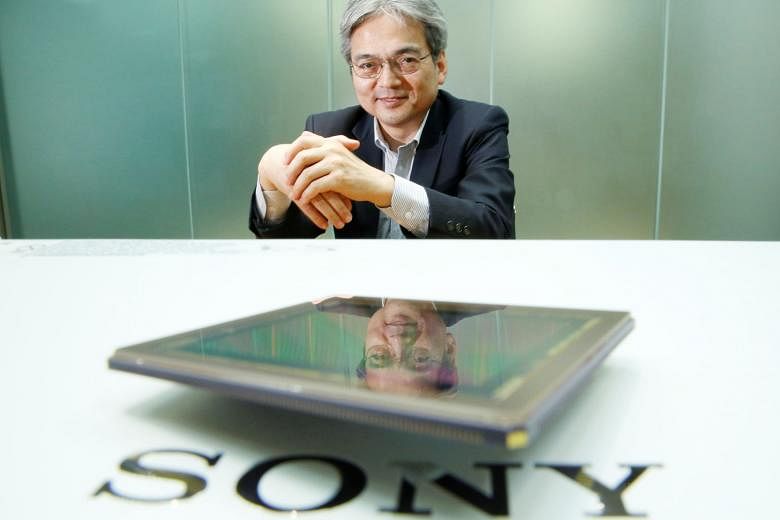TOKYO • Sony Corp is poised to report its highest-ever profit this year on strong sales of image sensors after years of losing ground in consumer electronics, and hopes to develop the technology for use in robotics and self-driving cars as competition heats up.
The results will mark a significant turnaround for the Japanese conglomerate, once famed for leading the world in consumer gadgets such as its Walkman music player, but now finding a new focus in image sensors and gaming.
Sony yesterday forecast that operating profit in the year through March will more than double to 630 billion yen (S$7.5 billion) compared with the year earlier and expects the chip division, most of which is made up of the image sensors business, to be the conglomerate's biggest growth driver.
Executives say a technological breakthrough in image sensors and sea change in the company's thinking are behind the success. The breakthrough, creating a sensor that captures more light to produce sharper images, coincided with soaring consumer demand for better smartphone cameras for sharing photos on social media.
The breakthrough, which involved reconfiguring the sensor layout and known as backside illumination, let Sony grab nearly half of the market for image sensors.
"We knew we wouldn't be able to win if we did what our rivals were doing," said Mr Teruo Hirayama, technology chief of Sony's chip business, recalling initial scepticism around the technology that is now used widely.
Sony's success "is really a function of having decided a long time ago to focus on that niche within semiconductors", said Mr Andrew Daniels, a Tokyo-based managing director at Indus Capital, an investment management firm.
"The process technology is very much that kind of 'takumi-no-waza'," he said, using a Japanese phrase for the pursuit of manufacturing perfection.
The sensor business was also helped by being an "outsider" within the company. By selling to companies outside Sony, it was insulated from declining sales of the company's own smartphones and other consumer electronics.
The sensors, for example, were first sold to All Nippon Airways, which used them to broadcast views from the plane's cockpit to passengers.
Sony is already bracing itself for intensifying competition in sensors as rivals, such as Samsung and OmniVision Technologies, step up their game, and is developing new sensor technologies for use in robotics and self-driving cars.
Investors say Sony still has a technological advantage that will take time for others to replicate.
It is developing sensor technologies that can quickly measure distances or detect invisible light that are expected to be used in autonomous driving, factory automation and robotics, they say.
REUTERS

